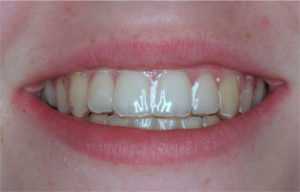Several times a year I have dental patients who come to my practice in Littleton, CO after their tooth was knocked out after general surgery. The whole tooth could be knocked out or a crown could be broken off the tooth. Having a tooth knocked out unexpectedly can be quite disturbing. Let me suggest a solution to prevent this problem: a simple bite guard or retainer. General anesthesia is sedation that is deep enough to cause you to stop breathing. Intubation (inserting a breathing tube to the back of the throat) is part of the plan. Still, it can be difficult to correctly position the tube depending on your weight, neck flexibility, how wide open your throat is, etc. The more difficult the intubation, the more work the anesthesiologist has to do to correctly place the tube, and the more likely it is that a tooth might be damaged.
If the intubation is done quickly in an emergency situation, the risk of damage to the teeth increases.
If you have gum disease, recession, or thin gums (all of these are signs of less bone support for the roots of your teeth), your risk of having a tooth knocked out is higher.
Consider these stories:
The Case of the Dislodged Tooth http://mobile.csahq.org/pdf/bulletin/issue_7/pauker044.pdf
https://www.ncbi.nlm.nih.gov/pubmed/21078071
Having a tooth knocked out is a source of litigation. Your surgeon will have you sign a waiver so they are not liable if it happens.

Before undergoing general anesthesia surgery, have your dentist make a thin, custom-fit clear bite guard or retainer that you can wear during your surgery. This thin plastic is similar to an Invisalign retainer. Weaker teeth that are at risk of being knocked out will be connected to and supported by the stronger teeth. This is highly recommended if you have had gum disease, or if you’ve had a lot of dental work (multiple crowns, bridges, fillings, etc.)The solution and prevention that I suggest is a retainer. Would you rather spend a couple of hundred dollars on a preventive retainer, or a thousand dollars on a crown, or several thousand on an implant if you lose a whole tooth?
Tell your surgeon and anesthesiologist that you’ll be wearing the retainer during surgery. Place it on your teeth before you are sedated, and you can leave it there until you have recovered and woken up later. It is thin enough that it won’t interfere with the intubation process. This can give you–and your anesthesiologist–peace of mind that your teeth won’t be damaged. You can focus on recovering from surgery instead of worrying about a broken tooth.
